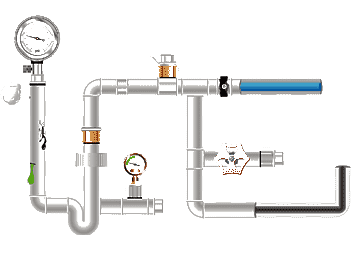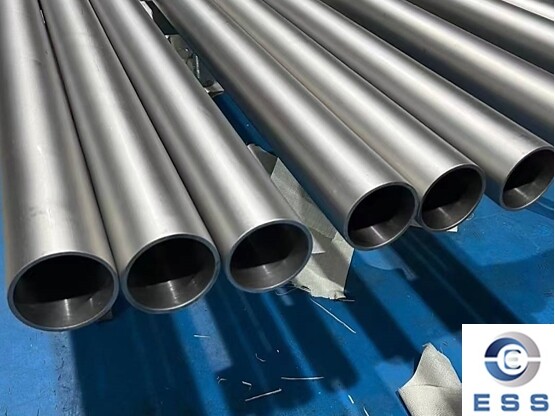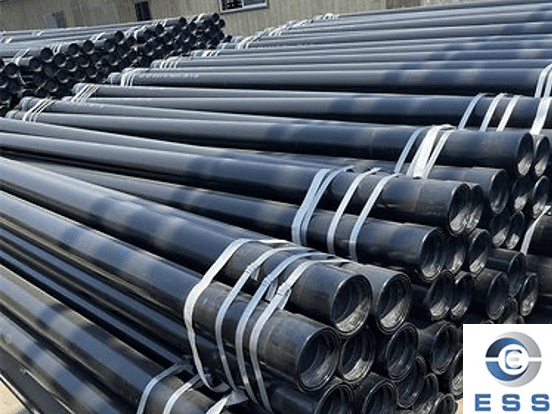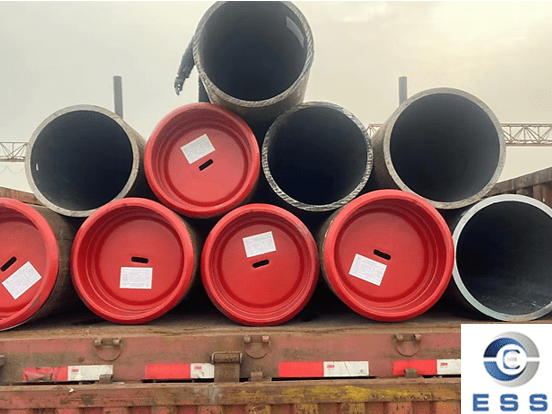Well casing pipe is a critical component for maintaining the proper functioning of a
water well system. It acts as a barrier, isolating the wellbore from the
external environment, preventing contamination, and providing structural
support.
Well Casing Pipe Materials
The material of the well casing pipe
directly affects its service life, corrosion resistance, and maintenance costs.
Common casing pipe materials include:
Steel casing pipe is the most traditional
and widely used type. It features high strength, good pressure resistance, and
resistance to mechanical impact.
Standard References: Common standards
include API
5CT, ASTM A53,
and ASTM
A106.
Advantages: Robust structure, suitable for
deep wells and complex geological environments.
Disadvantages: Susceptible to corrosion,
requiring regular protection and maintenance.
2. Plastic casing pipe (PVC or HDPE)
Plastic casing pipe is relatively new but
is becoming increasingly popular due to its high corrosion resistance.
Advantages: Corrosion resistant,
lightweight, and easy to install.
Disadvantages: Lower mechanical strength,
unsuitable for deep wells or areas with complex rock formations.
3. Concrete casing pipe
Rarely used in water wells today. Concrete
has high strength but is susceptible to certain types of damage.
Advantages: Low cost, resistant to chemical
corrosion.
Disadvantages: Prone to cracking, difficult
to repair, shorter service life.
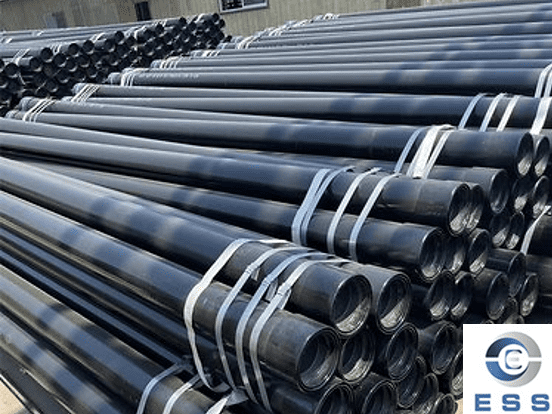
Types of Well Casing Pipe
Well casing pipe comes in various types,
each with its specific purpose and suitability for different environmental
conditions. The most common types include:
1. Diverting casing pipe
This is the first layer of casing pipe
inserted into the well to prevent wellbore collapse and isolate surface water.
2. Surface casing pipe
It extends deeper underground, protecting
freshwater layers from contamination by isolating them from drilling fluid and
other deep formations.
3. Intermediate casing pipe
This type of casing pipe is used for
drilling very deep wells, especially in unstable geological formations. It
helps stabilize the wellbore and prevents any unwanted pressure interactions.
4. Production casing pipe
As the name suggests, this type of casing
pipe is installed in the production layer, the area where oil, natural gas, or
water is expected to be extracted.
5. Liner
The liner is typically used in deep wells.
It is a shorter section of casing pipe that does not extend to the surface but
is suspended from the preceding casing pipe and secured with cement.
Water Well Casing Pipe Damage
1. Corrosion
One of the most common problems with steel casing
pipe. Factors contributing to corrosion include: water pH, the presence of
certain chemicals, electric current, etc.
Corrosion weakens the casing pipe, leading
to leaks and ultimately structural damage.
2. Collapse and rupture
External pressure, such as pressure from
soil or underground movement, can cause casing pipe collapse.
Casing pipe rupture leads to water
contamination and a drop in water pressure, affecting the well's production
performance.
3. Joints and connections
Casing pipe connections are particularly
prone to problems. Over time, cracks or gaps may develop at these joints,
allowing impurities to enter and contaminate the water supply system.
Assessing the Degree of Casing Pipe
Damage
The following conditions may indicate a
problem with your well casing pipe:
1. Sediment in the water
If you notice an increase in sand, mud, or
other sediment in the water, your casing pipe may be damaged.
2. Drop in water pressure
A sudden or gradual drop in water pressure
may indicate a leak in the casing pipe.
3. Changes in water quality
Changes in the taste, odor, or color of the
water may indicate that contaminants are entering the water through a ruptured
pipe.
4. Visible damage
In some cases, you may see visible damage
to the casing pipe, such as dents, displacement, or breaks.
Well Casing Pipe Repair
Once the extent of the damage is
determined, repairs must be carried out immediately. Casing pipe repair methods
vary depending on the type and severity of the problem:
1. Corrosion mitigation
For corroded steel casing pipe, several
methods can be used to mitigate the damage:
Cathodic Protection: This technique
involves applying an electric current to the casing pipe to prevent oxidation
processes that lead to corrosion.
Coating: A special coating can be applied
to the outer surface of the casing pipe to protect it from the effects of the
external environment.
2. Repairing cracks and leaks
For cracked or leaking concrete or plastic casing
pipe, sealant compounds or patches can be used to restore the casing pipe's
integrity.
3. Reinforcement and Replacement
If the damage is severe, reinforcement or
complete replacement of part of the casing pipe may be necessary. Specialized
equipment and techniques are essential for this.
Preventive Measures for Well Casing Pipe
Damage
Taking protective measures can extend the
life of the casing pipe and reduce maintenance needs:
1. Routine inspections
Regular inspections by qualified
professionals can detect minor problems early, preventing them from escalating
into major issues that result in costly repairs or reduced well performance.
2. Water quality control
Some preventative maintenance measures
include treating well water with products designed to stabilize pH or using
sacrificial anodes to prevent corrosion.
3. Protecting joints
Regular maintenance and inspection of
joints and connections to ensure they remain strong and free of wear is highly
beneficial for protecting the well casing pipe.
4. Professional intervention
While some well-related tasks can be
performed DIY, the repair and maintenance of well casing pipe is best left to
professionals. Having experts familiar with local geology and water quality is
crucial to ensuring your well is in optimal condition.
5. Choosing the right professionals
Seek out OCTG pipe suppliers with a proven track record, necessary certifications, and an
excellent reputation. Local knowledge and experience are essential for
diagnosing specific problems in your area.
FAQ
1. How often should well casing pipe be
inspected?
Civilian wells: Inspect every 1–2 years.
Industrial or deep wells: Annually,
focusing on corrosion, current, and structural integrity.
2. What is the typical lifespan of well casing
pipe?
Steel casing pipe can last 30–50 years with proper protection;
Plastic casing pipe approximately 20–30 years;
Concrete casing pipe generally does not
exceed 20 years.
Summary
Well casing pipe is an indispensable but
often overlooked component of a well system. Understanding its structure,
common problems, and maintenance points not only ensures a long-term stable
water supply but also significantly reduces later maintenance costs.









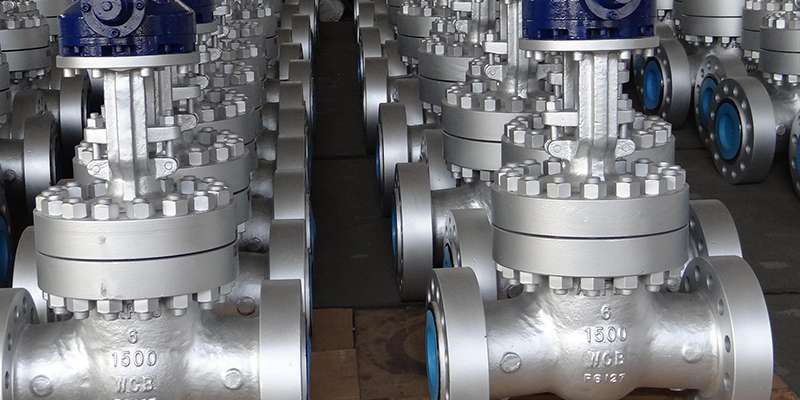



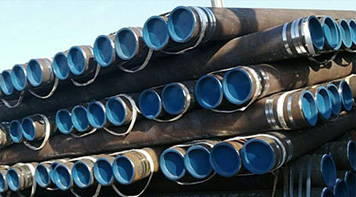 Eastern Steel Manufacturing Co.,Ltd not only improve product production and sales services, but also provide additional value-added services. As long as you need, we can complete your specific needs together.
Eastern Steel Manufacturing Co.,Ltd not only improve product production and sales services, but also provide additional value-added services. As long as you need, we can complete your specific needs together.
